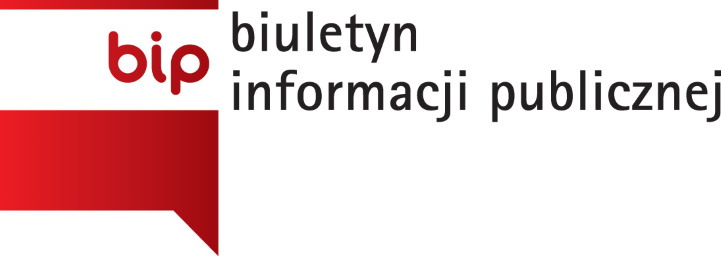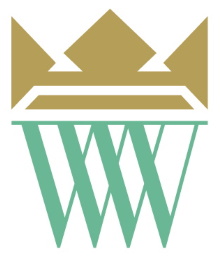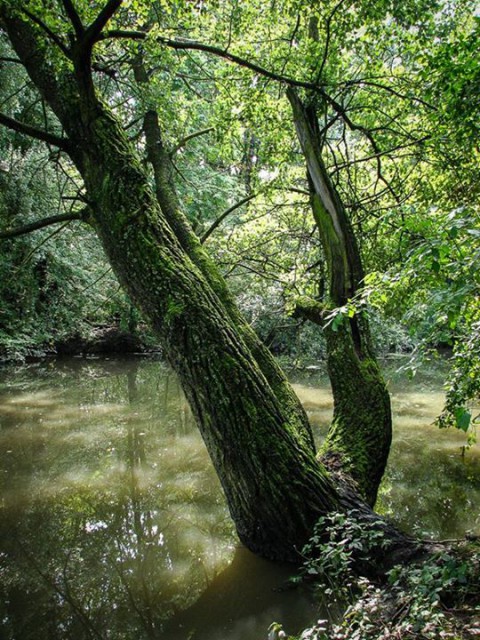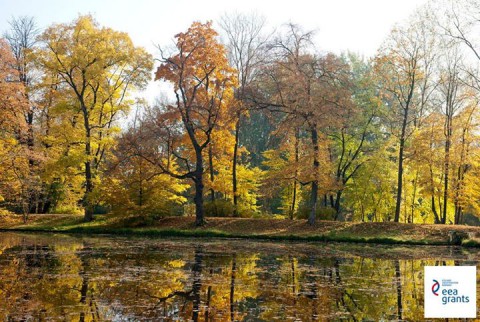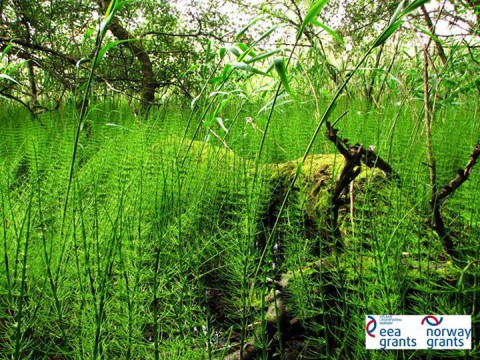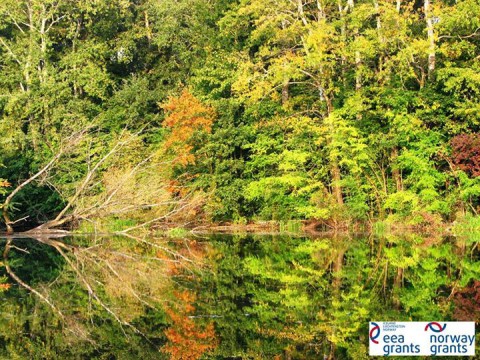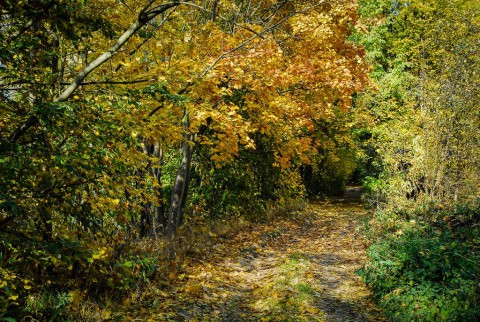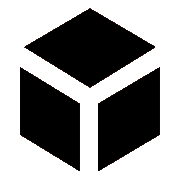Debate 1: Biodiversity in Morysin
On October 9th 2014 in the Wilanów palace a public debate was held on the Morysin Nature Reserve which is located on the grounds of the Museum of King Jan III’s Palace at Wilanów. The meeting was attended by over 30 people – environmentalists, naturalists, professors of biology, Wilanów district councillors and neighbours – passionately interested in the fate of this unique nature reserve located just 10 kilometres from the centre of the metropolis.
Morysin is an extraordinary meeting place for culture and nature. On one hand, it is a historical area where you can find the remains of the nineteenth-century constructions of the landscape park, on the other hand – a wild, rarely visited place with its own microclimate. A biodiversity area.
The importance of biodiversity for towns was stressed by prof. Joanna Pijanowska of the Faculty of Biology at the University of Warsaw. She pointed out that greenery in urban areas and their biodiversity generate both economic benefits and psychological advantages for inhabitants. Noticing that the share of green areas in the West and South of Europe is growing and decreasing in Eastern Europe, she postulated a smart and well-thought protection of urban biodiversity.
The next speaker was Dr. Piotr Szpanowski, deputy director of the Museum of King Jan III’s Palace at Wilanów. He outlined a brief, yet rich history of Morysin park, and then focused on the current problems related to the legal protection of the place.
Over the years, admission to Morysin was prohibited until its protection plan would be adopted. In September 2014, the plan has been published and came into force – the entry ban was lifted and interpretive walks were marked, the nature reserve opened up for local residents and visitors of the museum. In his speech, the director Piotr Szpanowski stressed how important this was for the museum, which has long sought the possibility of using the place for education and tourism. The provisions of the plan can be read here.
The third of the guest speakers was Dr. Michał Falkowski of EcoFalk (Bureau for environmental studies, monitoring & protection), who in concentrated his speech around the natural advantages of Morysin. He has noticed that although the reserve is located in a big city, with no shortage of biologists and/or nature experts, the ecosystem of Morysin has not yet been properly studied. Now, with all rules of the park in place, this task will be much easier.
The keynote presentations were followed by a discussion covering the following topic:
Protection of urban green areas
Prof. Ewa Symonides advocated strict prohibition of introduction of non-native and exotic species, which carry pests to the city. Referring to the bans, moreover she pointed out that too many bans in Polish nature reserves do not help protect these places. In her opinion, people – in order to protect the environment – must first know, tame and love nature – and only then protection may become something natural and not just a formal duty.
Wilanowskie Lake Revitalisation
There are a lot of controversies and doubts concerning the area around the Wilanowskie lake – the land admittedly belonging to the museum, while the lake is owned by the State Treasury, and all decisions concerning the protected part of the Wilanowskie lake are in the hands of the voivodeship marshal. In the discussion on this – somehow ownerless – part of the reserve, it was pointed out that the Wilanowskie lake was not just water but also a complex ecosystem which requires protection too. At this point curator Agnieszka Laudy ensured that the museum would do their best to protect the nature and revitalise the aquatic life in the waters of the Wilanowskie lake.
Anthropogenic impact on environment and urban-planning pressures
For ages the Morysin park has been adapting to the rhythm of the environment. However, the speed of this transformation has never been as quick as it is today, when the city is trying to subordinate the nature to urban rules, while the interest of the two are frequently conflicting. It was noted that soon in the vicinity of the nature reserve two large shopping centres will be build, and 1.2 kilometres from the park goes the new Southern Bypass route of Warsaw. Curator Agnieszka Laudy has pointed out that the museum does not intended to hamper the development of the city, and it obviously must reconcile the urbanisation pressure with the natural rhythm of nature. Therefore, professors from different disciplines are invited to the project to help build the knowledge-based society, which is necessary for the protection and preservation of heritage.
Organisation of a cycle of regular debates on the Wilanów and its nature
This was a postulate of Mr. Andrzej Budzyk, an expert in geology. At this point Miss Martyna Sowińska – the curator of the bio-diversity debate programme – ensured that the debates on nature would be continued. Two more debates were planned within the project by the end of 2014 and three more in the year 2015.
The debates take place within the Project „Social education in the conflict between urbanisation and ecology in the Wilanów Palace Museum” supported by Iceland, Liechtenstein and Norway under the European Economic Area Financial Mechanism.
